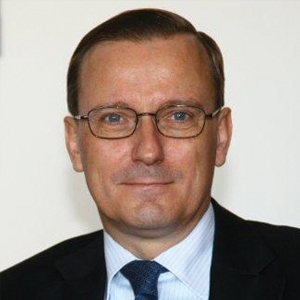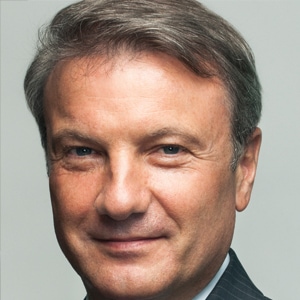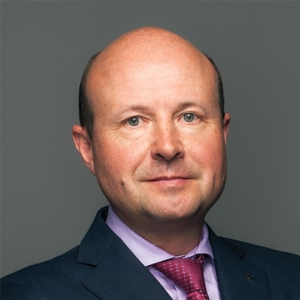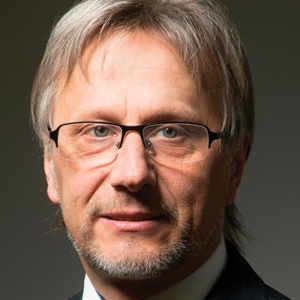Despite significant headwinds, CEE banks have a wealth of long-term opportunities
Covering 10 time zones and including countries as large as the Russian Federation and as small as Kosovo, the Central and Eastern European region has enormous economic potential. The region also has in the Baltic republics some of the most tech-savvy customer bases in Eurasia, while some of the smaller Balkan republics are far less sophisticated. Most CEE economies grew much faster than those in Western Europe during 2016; and for banks and other financial-services providers, the relatively slight levels of market penetration offer huge opportunities over the long term.
That said, banks operating in many CEE countries have faced significant headwinds. The low interest rate environment has bitten into lending margins; regulatory pressures have increased, and with that the cost of compliance; some governments have brought in harsh taxes or one-off bank levies, as in Hungary and Poland; while in other countries geopolitical uncertainty remains a drag on progress, as in Ukraine.
Probably no bank is more aware of all this than our CEE regional winner, Raiffeisen Bank International, which is active in more countries across the area than any of its peers. Since the financial crisis it has faced some serious challenges, but it surmounted them through what CEO Johann Strobl calls “a comprehensive transformation program.” RBI “optimized its group structure, increased its transparency and profitability, reduced its complexity, improved its asset quality and strengthened its capital ratios,” Strobl says. “The bank has done its homework in order to focus on its core task: serving the customer.”
Its latest financial results show how this is paying off. Despite a near 12% drop in net interest income, RBI raised its profit after taxes by 31.9% to €574 million ($609.3 million). Administrative costs were cut by 2.3%, and provisioning for loan-impairment losses was more than 40% lower than in 2015. On the country level, those in Southeastern Europe improved their results by an average of almost 40%, while successful turnarounds were achieved in Hungary and Ukraine. There were times when markets lost faith in RBI, but in 2016 its successful reorganization and continued commitment to providing high quality and competitive services in each of its markets have paid off handsomely.

All three Baltic republics have adopted the euro; and their banking industry, dominated by large pan-Nordic groups, is technologically advanced. The leading lender in Estonia’s highly concentrated banking industry and our winner, Swedbank Estonia, increased its lending volumes by 5.6% and net interest income by 9.1% to more than €200 million last year. With the provision ratio for impaired loans improved by 14%, net profit jumped from €59 million to €175 million. “Our solid results mirror the good health of the Estonian economy and consumer confidence,” says Robert Kitt, CEO of Swedbank Estonia, who pointed to new offerings—including contactless cards and updates to mobile apps—being well received. “Customers’ shift toward digital channels is ongoing,” he adds, noting that “by the end of 2016 we had more than 140,000 active mobile customers, an increase of 73% compared to 2015.”
Our winner in neighboring Latvia, SEB banka Latvia, increased its new lending by 51% last year to €751 million, of which €597 million was to companies and €154 million to individual customers, according to the bank. Latvia’s second largest universal retail bank by number of customers and corporate loans, SEB’s mortgage issuance more than doubled, almost half of this as part of the government’s program to help in home purchase for families with children. Combined with robust returns from its management of pension savings and strong position in payment cards, SEB achieved a 14% rise in income, and the bank increased its earnings by 49% in 2016 to €52.3 million. The first bank in Latvia to introduce contactless payment cards four years ago, SEB saw issuance increase by 80% over the last year.
In the third of the Baltic states, Lithuania’s Siauliu bankas recorded the largest net profit in the group’s history in 2016, up by 83%, close to €44 million. The

most successful by far of the local banks, this was on the back of steady organic expansion, with loans up by 13%, net interest income rising by 11% and deposits up 4%. The quality of assets improved, with the ratio of nonperforming assets dropping from 7.5% to 4.7%. CEO Vytautas Sinius notes that he and his team are “work[ing] to increase Siauliu bankas’s visibility on the international stage.” But meanwhile, the bank continues to strengthen its leading local position, with a heavy emphasis on customer service and operating efficiency. Last year the overall rate of return on capital exceeded 26%, with a cost-to-income ratio of 42%.
The imposition of a banking tax made 2016 a difficult year for the Polish banking sector. At our winner, mBank, president and CEO Cezary Stypukowski says the bank had achieved a “satisfying result … generated under strong pressures exerted on the revenue of financial institutions”—a tax bill of 329 million zoty ($82.1 million) reduced return on equity (ROE) to 10.1%. But operating profit, adjusted for one-off events, improved by 15.6%; and group core revenues reached a historic high of 3.8 billion zoty. This was largely achieved through organic growth, and a 17.2% increase in retail customer balances was driven as much by increased transactions as by customer acquisition. Indeed, mBank has always set high store on its digital offering and has the highest mobile-customer penetration rate in the sector, with the ratio of active mobile-banking users to the number of personal accounts close to 40%.
Hungary’s banks have also been subject to exceptional levies, but 2016 was a significant year for our winner, OTP Bank, with the acquisition of the largely mortgage portfolio of AXA Bank through one of the most important deals in the country in recent times. OTP’s margins have proved resilient, despite the lower-interest-rate environment. Pretax profit, without one-off items, improved by 70% thanks to reduced risk costs, the bank says. Consequently, ROE leapt from 5.1% to 15.3%. The bank is in the middle of its Digital Transformation Program, and more than 500,000 clients now use the new OTP digital solutions.
In a year when the Slovakian economy recorded low growth, our winner, VUB Group, more than held its own. The bank has taken a proactive approach to the difficult market conditions, and as CEO Alexander Resch notes: “In spite of [a] more and more challenging banking environment, VUB Group was successful in several initiatives announced in both retail and corporate segments.” As a result, both customer loans and deposits were up by 19% year-on-year, according to bank sources. A member of international banking group Intesa Sanpaolo, VUB was particularly successful in its new mortgage offer, which resulted in an 18% increase in mortgages granted in the first half of the year alone. Net profits for the year more than doubled to €265 million.
The Czech Republic’s largest bank by customer base, with 4.7 million customers, Ceska sporitelna consolidated its strong position in 2016. Assets rose by 11.1%, and there was substantial growth in both customer deposits (up 10.6%) and customer loans (up 8%). Part of Austria’s Erste Group, Ceska sporitelna is a leader in the local mortgage market, with a market share of 26%. Net profits were up 8%, boosted by the sale of the bank’s equity stake in VISA Europe, but also due to an improved economic climate leading to lending growth and an improvement in the quality of the bank’s loan portfolio. The bank’s Tier 1 ratio stood at 19.5% at year-end.

In Slovenia, SKB Banka, a member of Societe Generale Group, had an excellent year, gaining market share in both loans and deposits, and generating a 12.3% increase in net banking income. After a long period of reducing overhead, the bank achieved the lowest cost-to-income ratio of any bank in Slovenia; and net profits improved by 86% to €63.7 million. CEO François Turcot notes that SKB Banka “will continue to invest, notably in our digital transformation,” and that the bank plans to introduce mobile banking with state-of-the-art solutions by the end of 2017. Last year the bank’s subsidiary SKB Leasing completed its acquisition of Banque Peugeot Finance Slovenia.
The second largest bank in Croatia, Privredna banka Zagreb, significantly increased group profits last year to 1.6 billion kuna ($228.5 million). Assets at Privredna banka Zagreb, whose parent bank is Intesa Sanpaolo, were also up by 4.7% to 82 billion kuna, and its capital adequacy ratio remained stable at above 20%, according to the bank. Under Boo Prka, the chairman of the management board, the bank was able to capitalize on Croatia’s strengthening economy as its volume of deposits rose and net interest income increased by 6.5%. Privredna banka Zagreb attributes much of its success to a strong customer base built up through its client-orientated strategy. The bank is introducing a number of measures to improve its CRM capabilities and digital offering, building on its share of over 30% in the Croatian credit card market.
Amid Bosnia and Herzegovina’s challenging macroeconomic environment, our winner, Raiffeisen Bank dd Bosna i Hercegovina, grew its total assets by 5.6%

and extended lending to customers by 1.3% while at the same time rolling out new digitally delivered products and services. “Following technology development, last year we strove to harmonize our offerings for clients with digital trends in order to facilitate their access to our services,” says CEO Karlheinz Dobnigg. “We offer our clients a number of innovative financial products: They can apply for a loan and/or credit card online at whatever time and place suits them or communicate with the Bank via Web chat available on our website.” Operating income was 2.4% stronger, deposits surged by 8%, the cost-to-income ratio improved, and nonperforming loans were significantly lower.
Established as a BNP Paribas joint venture in 2008—the same year Kosovo declared its independence—our winner there, TEB, had a profitable 2016, despite difficult circumstances in this transition economy. Assets were up, return on average assets was 4.4%, and the return on average equity at the end of the third quarter was a healthy 34%, sliding to 29% by year’s end. The bank’s capital adequacy ratio stood at nearly 20% at year-end. Among a number of initiatives aimed at women customers, in August last year, the bank launched its “Women Entrepreneurship Credit Card.”
Operating within a macroeconomic and political situation that remains challenging, Banka Kombetare Tregtare, Albania’s oldest and largest commercial bank, succeeded in raising both customer loans and deposits last year. Net assets rose to $3 billion, according to the bank, giving it a market share of over 25%, and net profits increased to $58 million. The bank continues to extend its branch network, the largest in the country with a total of 92 branches, of which 66 are in Albania and 26 in neighboring Kosovo.
Backed in Macedonia by its French parent, over the last six years Ohridska Banka Societe Generale has seen continuous growth in its asset base, which rose by a further 8.8% last year, according to bank data. Overall, 2016 was the bank’s best year to date with net banking income and profits both up. Customer loans grew by 10.9% and deposits by 12.7%. Given this positive curve, the bank will continue to leverage synergies with other Societe Generale entities in the Balkan region and worldwide. President Branka Pavlovic comments that “our ambition is to contribute in writing new chapters for establishing the bank of tomorrow.”

In Serbia, our winner, Raiffeisen Bank Beograd, combines a reputation for reliability and service with embrace of the latest technologies. “The previous year was a year of transformation and innovation for our bank,” says chairman Zoran Petrovic explains. “We have completed a holistic branch-transformation project, introducing new and innovative services and executing a process of digitization in accordance with the latest banking trends.” The bank grew its assets by 7.6% in 2016, with total loans to both individual customers and companies rising by 4.8%. Keeping a lid on costs and being able to reduce its provisioning enabled the bank to raise its pretax profit by 23% to €59 million.
The largest bank in Bulgaria, UniCredit Bulbank reinforced its leading position last year, achieving increased market shares of assets, deposits and loans. The bank claims to have received the biggest new volume of deposits on the market, up by 12% to 14.8 billion leva ($8 billion). Assets also increased by 8% to over 20 billion leva. UniCredit Bulbank has the best cost-to-income ratio among its peers at 29.4%, an improvement of one percentage point over the year. The bank continued to add to its consumer digital offer, issuing 19% of the new contactless cards on the market. The number of mobile-banking users grew by almost 150%, and the number of mobile transactions was up by three quarters. ROE rose to 12.8%.
A year after its merger with Volksbank Romania, Banca Transilvania (BT) has been able to declare itself well on track with the integration of banking operations. Horia Ciorcila, chairman of BT’s board of directors, stated in a press release that “2016 represented a new phase in consolidating the BT Group and we are pleased that this year we delivered again better than promised.” The bank has undertaken a successful rebranding exercise and maintained operational efficiency, with a cost-to-income ratio at a comfortable 44%. The proportion of nonperforming loans more than halved to 4.6% of the total loan portfolio. Card transactions increased by a quarter over the year, giving Banca Transilvania a 20% share by volume of the Romanian card-transaction market.
Celebrating 25 years of activity in Moldova, Moldova Agroindbank strengthened its leading position in 2016 against a backdrop of fragile recovery from the

2012-2013 debt crisis. The largest commercial bank in Moldova, with a 27% market share by assets, its capitalization remains good with a risk-weighted capital adequacy ratio of 16% in August of last year. Net profits increased to over 400 million lei ($20.7 million), well above its nearest competitor, and ROE was over 13%. Deposits were also up; and although there was a slight dip in loans, the bank’s share in the local loan market remains close to a third.
Sberbank is not only by far the largest bank in Russia, but also much more efficient than its state-controlled peers and generally seen by Russians as the most “semidetached” from the Kremlin. Bank sources say it grew lending by more than a third in 2016 to more than 10.6 trillion rubles ($186.2 billion), while net interest income rose by 37.9% thanks to higher volumes, improving liabilities structure and cheaper funding. Fee and commission income was up by 21.3%, the overall cost-to-income ratio fell sharply, and provisioning charges were significantly lower. Operating profit of 1.7 trillion rubles was nearly 19% higher than in 2015, according to the bank, and ROE was up by 10.6%. Deputy chairman Alexander Morozov focuses on “enhanced efficiency as our most important result for 2016—improving our cost-to-income ratio to 35.7% and increasing the net fee and commission income-to-operating-costs ratio to 62%. Taken together, this significantly reduces the bank’s sensitivity to a possible reduction in margins of the banking business and allows us to look positively toward 2017.”

TBC again dominated in Georgia, with close to 40% of the banking market under wraps. Total assets grew an eye-opening 55% in 2016, with both loans and deposits matching that pace with gains of 59% and 56% respectively.
State-owned Belarusbank, the oldest and largest commercial financial institution in Belarus, succeeded comfortably in maintaining its leading position in the domestic market last year in terms of assets, loans and deposits. With more than 6.5 million retail customers, Belarusbank has the widest network of branches and ATMs in the country. The bank is contributing to a number of government programs and large-scale investment projects, and also services 20% of Belarussian foreign-trade turnover. As of March 2017, the bank’s capital adequacy ratio was a healthy 19.3%, and ROE was 4.5%, according to bank sources.
Despite an adverse economic and geopolitical climate in Ukraine, Raiffeisen Bank Aval achieved a remarkable turnaround in 2016, transforming a €91 million pretax loss recorded the previous year into a €150 million profit. Corporate lending grew by 6.8% and now accounts for nearly 60% of the loan book. And, as CEO Volodymyr Lavrenchuk points out, “The European Bank for Reconstruction and Development (EBRD) became an investor in Raiffeisen Bank Aval; and this was an important signal for our customers, as this supranational bank offers many business financing programs in Ukraine.” Although net interest income fell by 2.7% to €171 million, costs were tightly controlled, nonperforming loans were down, and the cost-to-income ratio was almost a third lower at 47.1%. “We have increased the number of our services for customers in all segments,” says Lavrenchuk, “and acquired 1,500 new corporate and 100,000 new retail customers. Customer service quality, together with a five-year program aimed at boosting efficiency, enabled us to achieve a record profit in Ukraine.”

Turkey’s most profitable and well-capitalized bank put in another strong performance in 2016. Akbank’s total assets grew by 16.6% to above L294 billion ($80 billion), deposits increased by 16.4% to L174 billion, and net profit rose from L3.2 billion in 2015 to more than L4.8 billion after provisioning L1.35 billion for taxes. CEO Hakan Binbagil says that Akbank’s “robust capital, prudent management, efficiency and asset quality” all contributed to the result, and that “through leveraging our strong balance sheet we continued to bring resources to Turkey and channel them to the real sector.” Lending increased by 18% to L219 billion, with local currency commercial loans rising by 23%—twice the average rate for the banking industry. Akbank has one of the lowest cost-to-income ratios among its peers and achieved the highest rates of return on both equity and assets. Its exposure to nonperforming loans fell to 2.3%. Its cost of risk was the lowest among privately owned Turkish banks, while its capital buffers are the strongest.

|
Best Banks In Central & Eastern Europe 2017 |
|
|
REGIONAL WINNER |
Raiffeisen Bank International |
|
Albania |
Banka Kombetare Tregtare |
|
Belarus |
Belarusbank |
|
Bosnia & Herzegovina |
Raiffeisen Bank dd Bosna i Hercegovina |
|
Bulgaria |
UniCredit Bulbank |
|
Croatia |
Privredna banka Zagreb |
|
Czech Republic |
Ceska sporitelna |
|
Estonia |
Swedbank Estonia |
|
Georgia |
TBC Georgia |
|
Hungary |
OTP Bank |
|
Kosovo |
TEB |
|
Latvia |
SEB banka Latvia |
|
Lithuania |
Siauliu bankas |
|
Macedonia |
Ohridska Banka Societe Generale |
|
Moldova |
Moldova Agroindbank |
|
Poland |
mBank |
|
Romania |
Banca Transilvania |
|
Russia |
Sberbank |
|
Serbia |
Raiffeisen Bank Beograd |
|
Slovakia |
VUB Group |
|
Slovenia |
SKB Banka |
|
Turkey |
Akbank |
|
Ukraine |
Raiffeisen Bank Aval |



